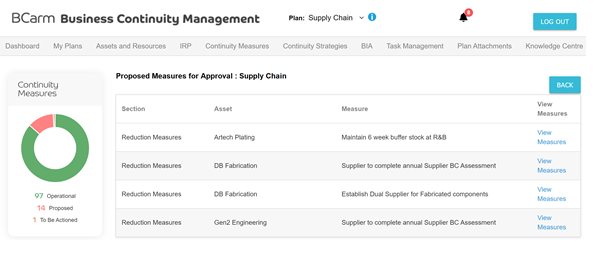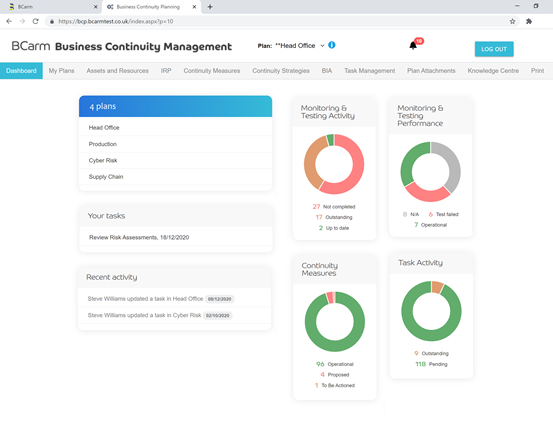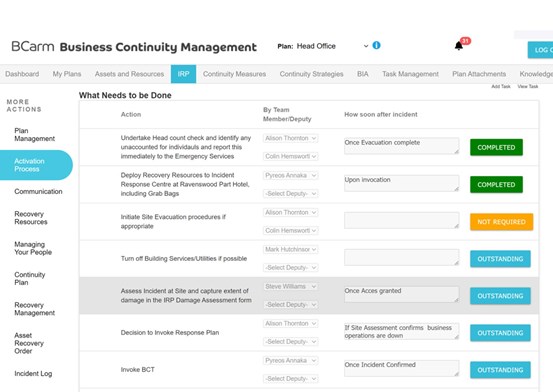How does BCarm’s Business Continuity Management System help you test, monitor and exercise your business continuity plans?
Let's first recognise that whilst the business continuity plans may be evidenced in a document, the plans are actually made up of:
- Risk controls and processes that allow you to minimise the likelihood of disruption to the business and its assets and resources,
- Measures and arrangements that allow you to recover business functionality should it be lost or become unavailable before it results in a disruptive event,
- Incident Response Plans that allow you to respond in a controlled and cohesive manner, building maximum certainty to stakeholders should the business operation be disrupted,
- Necessary resources, data, skills and knowledge to invoke your plans should your primary infrastructure be compromised.
All of the above need to be operational, deployable and operable by your team because it's designed to “protect the business when it is vulnerable and its existence is threatened, so when it's invoked, it needs to perform at its best. Remember, Brand/Reputation can be significantly enhanced by the way a crisis is managed, and it can also be massively damaged.
So, how do we make sure that we can achieve this by testing and monitoring the business continuity arrangements we have in place to make sure they are operational and deployable and exercising the plan so that our teams are capable of carrying out what will be a defining event for the business?
Here’s how BCarm’s BCMS helps you achieve this.
Monitoring and Testing your Business Continuity Arrangements
You can record all of the risk reduction and recovery measures you have in place against the relevant Assets and Resources and set a monitoring or testing regime in days against this, assigned to a member of the team.

You can do the same for any resources you need to put in place to manage your Incident Response.
Your Team Members will get notified of the monitoring/testing they need to carry out and can then record the outcome (passed/failed) in the testing log. If there is a failure, a corrective action can be identified, recorded and assigned.
Real-time Visibility
All of the monitoring/testing results are displayed on your Dashboard, showing how resilient you are in real time.
The BCMS can also send out alert notifications if monitoring or testing doesn’t happen or if it results in a failure.

Incident Mode
Your Incident Response Plan (IRP) has 2 modes – Plan Builder and Incident Mode. When you switch to “Incident Mode”, your IRP allows you to record the actions you have taken against your plan and log additional actions you need to take. All of this is instantly shared with the members of your Business Continuity Team in real time.

When the incident is over, and you stand down your team, you can do an Incident Review, identify any lessons learnt and corrective action and record and track these in the BCMS. Incident Mode also allows you to test your IRP as well.
More information on Business Continuity management
To find out how we can help your business with an existing Business Continuity management plan or on how to get started, get in touch for a chat.
If you found this article useful, you may also be interested in our related insights:
- BCarm Business Continuity Management System in action - watch now
- Creating buy-in to Business Continuity
- Choosing the right BC strategy
- How do I start the Business Continuity Planning Process?



